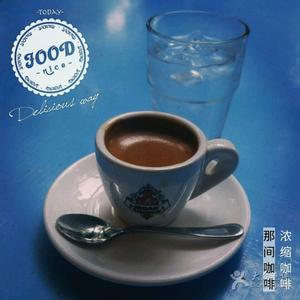Unique soft floral flavor of Yega Chuefei Adordo Coffee. Introduction to the characteristics of the manor area.
Since taking power in 2000, FRETILIN has created a federal government based on regional ethnic autonomy, focusing on economic development and coordinating the relationship between stability, development and national unity. [1]
Constitution
On December 8, 1994, the Ethiopian Constituent Assembly adopted the fourth constitution, the Constitution of the Federal Democratic Republic of Ethiopia, which came into force on August 22 of the following year. The new constitution has 11 chapters and 106 articles, stipulating that Ethiopia is a federal country with separation of powers and parliamentary system. The President is the Head of State for a term of six years. The Prime Minister and Cabinet have the highest executive power. The majority party or political alliance forms a cabinet and is collectively responsible to the House of People's Representatives.
All ethnic groups are equal and autonomous and enjoy the right of national self-determination and secession. After the legislative body of any ethnic group adopts the request for secession by a two-thirds majority, the federal government shall organize a referendum for that ethnic group within three years. The majority agrees to secede from the Federation. A canton may use its native language as a cantonal working language. Private property is guaranteed, but the State has the right to expropriate it for compensation. Urban and rural land and natural resources shall be owned by the state and shall not be sold, sold or transferred. A multi-ethnic national army and police force shall be formed, and the army shall not interfere in government affairs. Safeguard citizens 'democratic freedoms and fundamental rights. [1]
Parliament
The Federal Parliament consists of the House of People's Representatives and the House of Federation and is the highest legislative body of the country.
The People's Representatives Department is the highest legislative and executive body of the Federation. It is responsible for drafting and amending the Constitution and federal laws. It is elected by universal suffrage every five years. In 2010, there were 547 seats, of which at least 20 were for ethnic minorities. Abadula Gemeda, the current Speaker, took office in October 2010.
The Council of States has the power to interpret the Constitution, to decide on national self-determination and separation, and to resolve disputes between nations. There are 117 deputies elected for five-year terms by the state assemblies or directly by the people, with at least one representative for each ethnic group and one additional representative for every million people. In 2014, the current Speaker, Kassa Teklebirhan (female), took office in October 2010.
judicial
The Federal Supreme Court is the highest judicial body of the Federation. In 2014, the current president Tegena Getaneh, under the jurisdiction of the Federal High Court and the Court of First Instance. In 2014, Attorney General Berhan Hailu was appointed Minister of Justice. [1]
government
The current Government was formed in October 2010 and slightly reshuffled in November 2012. In addition to Prime Minister Hailemariam, there are 20 cabinet members, mainly: Deputy Prime Minister and Minister of Education Demek Mekonen Demeke Mekonnen, Deputy Prime Minister Coordinator and Minister of Public Service Mukhtar Kedil (Muktar Kedir), Coordinator at Deputy Prime Minister level and Minister of Communications and Information Technology, Debrezión Gabrémichael Debretsion Gebremikael, Minister of Foreign Affairs Tewodros Adhanom, Minister of Finance and Economic Development Sofian Ahmed, etc. Yegashefi is a small town, 700- 21,000 meters above sea level, synonymous with Ethiopian fine coffee. It is a wetland since ancient times, and the old saying "Yirga" means "settle down" and "Cheffe" means "wetland". The way coffee is produced and the flavor is so prominent that Ethiopian coffee farmers compete to be proud of their coffee with Yegashfi flavor, which has become Africa's most famous coffee producing area.
At first, the coffee trees in Yegashefi were planted by European monks, but later by farmers or cooperatives. Yegashefi is actually formed by surrounding coffee communities or cooperatives, which generally include: Hafusa, Hama, and Biloa.
These mountain villages are foggy, spring all year round, cool but not hot in summer, rain but not damp in winter, and they breed unique regional flavors of citrus and flowers. Coffee trees are mostly planted in farmers 'backyards or mixed with other crops in farmland. When talking about Ethiopia, it is better to talk about the origin of coffee first. About the sixth century AD, an Arab shepherd named Kardi drove sheep to the Ethiopian grassland to graze. He found it strange to see that every goat was extremely excited and excited. Later, after careful observation, he found that these sheep were excited only after eating some red fruit. Kardi tasted some curiously. He found that these fruits were very sweet and delicious, and he felt very refreshed after eating them. From then on, he often drove his sheep to eat these delicious fruits together. Later, a Muslim passing through here picked some of this magical red fruit and took it home, and shared it with other believers, so its magical effect spread.
Africa is the home of coffee. Coffee trees were most likely discovered in Ethiopia's KAFFA province. Later, groups of slaves were sold from Africa to Yemen and Arabia, and coffee was taken to various places along the way. Coffee was certainly grown in Yemen in the 15th century or earlier. Although Arabia had the most prosperous port city in the world at that time, Mocha prohibited any seed export! This obstacle was eventually broken by the Dutch, who smuggled the surviving coffee trees and seeds to Holland in 1616 and began growing them in greenhouses

Important Notice :
前街咖啡 FrontStreet Coffee has moved to new addredd:
FrontStreet Coffee Address: 315,Donghua East Road,GuangZhou
Tel:020 38364473
- Prev

Introduction of boutique coffee beans in Xidamo Chiso Coffee Flavor Manor, Ethiopia
It is produced by Xilisha Cooperative near Dilla town. The cooperative was founded in 1976 and is now a member of the SCFCU of the Sidamo Farmers' Cooperative Union. We have screened the coffee again, and the selected batch has excellent flavor, which tends to be honey, citrus and coffee flowers. The coffee in Sidamo has very diverse flavors and different kinds of soil.
- Next

Introduction to the flavor and taste characteristics of the fruity Yegashifi coffee manor in Ethiopia
Ethiopia is located at 6 ~ 9 degrees north latitude and 34 ~ 40 degrees east longitude. It is located in the center of the Horn of Africa and is a landlocked country. It is bordered by Djibouti and Somalia to the east, Sudan to the northwest, Eritrea to the north and Kenya to the south. [5] there are mainly mountain plateaus in Ethiopia, and most of them belong to the Ethiopian plateau. The central and western regions are the main body of the plateau, accounting for the whole territory.
Related
- Detailed explanation of Jadeite planting Land in Panamanian Jadeite Manor introduction to the grading system of Jadeite competitive bidding, Red bid, Green bid and Rose Summer
- Story of Coffee planting in Brenka region of Costa Rica Stonehenge Manor anaerobic heavy honey treatment of flavor mouth
- What's on the barrel of Blue Mountain Coffee beans?
- Can American coffee also pull flowers? How to use hot American style to pull out a good-looking pattern?
- Can you make a cold extract with coffee beans? What is the right proportion for cold-extracted coffee formula?
- Indonesian PWN Gold Mandrine Coffee Origin Features Flavor How to Chong? Mandolin coffee is American.
- A brief introduction to the flavor characteristics of Brazilian yellow bourbon coffee beans
- What is the effect of different water quality on the flavor of cold-extracted coffee? What kind of water is best for brewing coffee?
- Why do you think of Rose Summer whenever you mention Panamanian coffee?
- Introduction to the characteristics of authentic blue mountain coffee bean producing areas? What is the CIB Coffee Authority in Jamaica?

